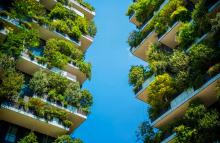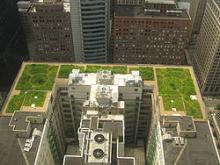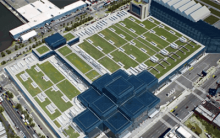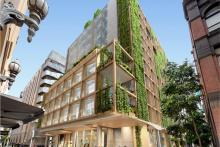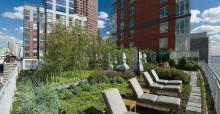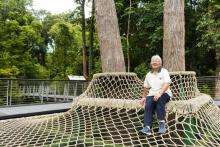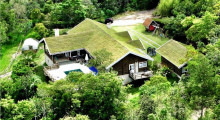40 % of GHG emissions are from the built environment heating & cooling infrastructure. After all us humans need to be cosy in our cubes.IF building are the elephant in the room then why don't politicians take action on reviewing SEPP's , provide incentives & grants, mandate biosolar for new developments, provide greater FSR's for green roofs....etc and even review the BCA which is well due.
News
What Is Green Infrastructure?
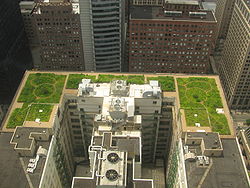 Green infrastructure, also sometimes referred to as GI, is an innovative approach to managing stormwater runoff. It utilizes natural processes, such as evapotranspiration and infiltration, to slow down stormwater to from overwhelming SW systems and polluting waterways.
Green infrastructure, also sometimes referred to as GI, is an innovative approach to managing stormwater runoff. It utilizes natural processes, such as evapotranspiration and infiltration, to slow down stormwater to from overwhelming SW systems and polluting waterways.
Largest Green Roof Solar Installation in New York City Advances Governor's Nation-Leading Clean Energy and Jobs Agenda
YES NYC has a PLAN to be carbon neutral.
When the 202020 Vision started in 2013, it set out to achieve 20 per cent canopy cover in Australia’s urban areas by 2020. It may not be achieved by next year but the aspiration has generated a vast amount of activity.
Plans are afoot to redesign an entire block in central Melbourne based on biophilic principles, creating an exciting new landmark in the city.
In the US, the demand for green roofing solutions is growing as major cities adopt specific ordinances requiring green roofing on new buildings to assist in the battle against climate change and stormwater issues.
Canberra's relative abundance of green vegetation provides a natural canopy to reduce heat stress not only for humans but for our rich biodiversity. Investing in and maintaining our "living infrastructure" is critical to a healthy and liveable future.
One of Singapore’s leading conservationists Dr Lena Chan discusses what it means for cities to be biophilic and reminds us that the best way to live sustainably is to reconnect with nature.
Two Griffith University researchers have been awarded a grant for research that will help cities predict and quantifying the benefit of similar green infrastructure for capturing atmospheric carbon.

